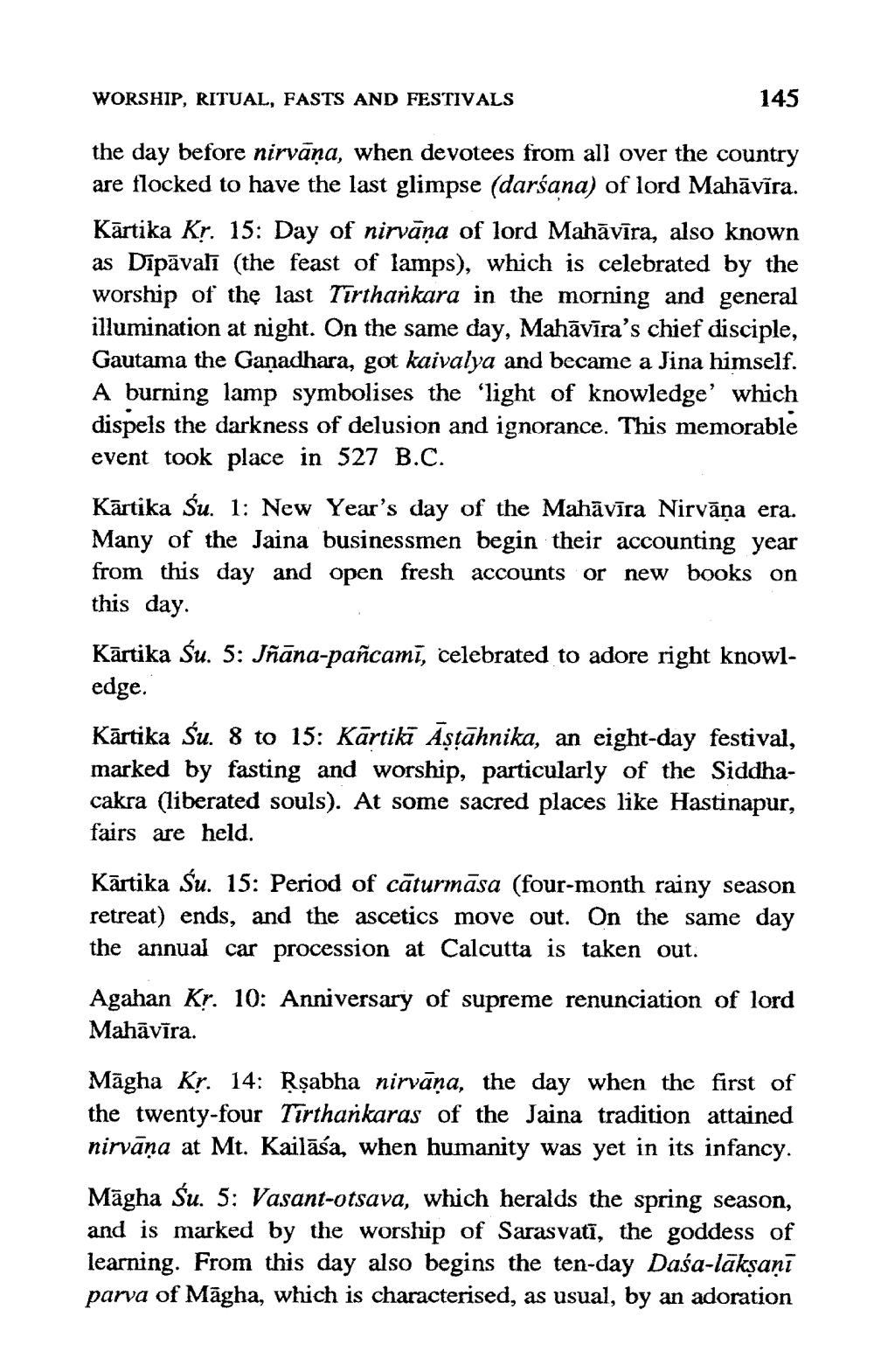________________
WORSHIP, RITUAL, FASTS AND FESTIVALS
145
the day before nirvāņa, when devotees from all over the country are flocked to have the last glimpse (darśana) of lord Mahāvīra. Kārtika Kr. 15: Day of nirvāņa of lord Mahāvīra, also known as Dīpāvalī (the feast of lamps), which is celebrated by the worship of the last Tirthankara in the morning and general illumination at night. On the same day, Mahāvīra's chief disciple, Gautama the Ganadhara, got kaivalya and became a Jina himself. A burning lamp symbolises the 'light of knowledge' which dispels the darkness of delusion and ignorance. This memorable event took place in 527 B.C. Kārtika Śu. 1: New Year's day of the Mahāvīra Nirvāṇa era. Many of the Jaina businessmen begin their accounting year from this day and open fresh accounts or new books on this day. Kārtika Śu. 5: Jñāna-pañcamī, celebrated to adore right knowledge. Kārtika Śu. 8 to 15: Kārtikī Āştāhnika, an eight-day festival, marked by fasting and worship, particularly of the Siddhacakra (liberated souls). At some sacred places like Hastinapur, fairs are held. Kārtika Śu. 15: Period of cāturmāsa (four-month rainy season retreat) ends, and the ascetics move out. On the same day the annual car procession at Calcutta is taken out. Agahan Kr. 10: Anniversary of supreme renunciation of lord Mahāvīra. Māgha Kr. 14: Rşabha nirvāņa, the day when the first of the twenty-four Tirthankaras of the Jaina tradition attained nirvāņa at Mt. Kailāśa, when humanity was yet in its infancy. Māgha Śu. 5: Vasant-otsava, which heralds the spring season, and is marked by the worship of Sarasvatī, the goddess of learning. From this day also begins the ten-day Daśa-lākṣaṇī parva of Māgha, which is characterised, as usual, by an adoration




